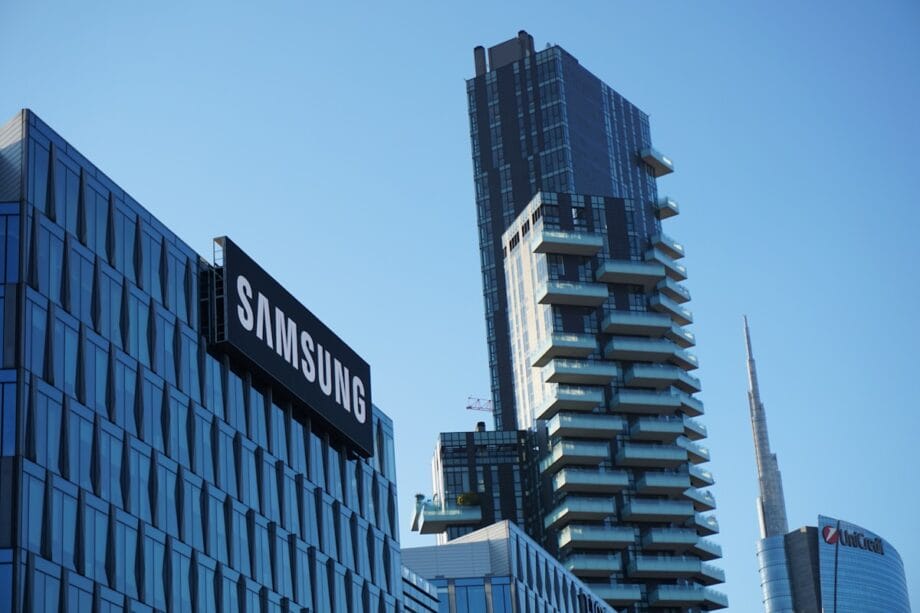Samsung Faces Challenges Amid Intensified Chinese Competition
New Delhi — The global smartphone arena is undergoing a significant transformation, and the strain on Samsung Electronics is unmistakable. Once the unequivocal leader in the market, the South Korean titan is now grappling with fierce competition from Chinese manufacturers, as consumers increasingly seek enhanced value and features.
Even though Samsung retains its status as a leading vendor, recent statistics reveal a contraction in its market share amid a progressively competitive landscape. In the initial quarter of 2025, Samsung shipped approximately 60.5 million smartphones, accounting for about 20 percent of the global market.
However, this figure emerges in a broader context, where total shipments have only experienced a nominal increase—approximately 0.2 percent year-on-year during Q1. While these numbers might depict a semblance of stability, a deeper analysis uncovers underlying vulnerabilities.
One pivotal factor contributing to Samsung’s challenges is the rapid encroachment by Chinese vendors. Research from the International Data Corporation (IDC) indicates that by the fourth quarter of 2024, Chinese brands had consolidated substantial market share, capturing around 56 percent of global shipments.
This surge highlights robust growth in price-sensitive and emerging markets, where brands such as Xiaomi, OPPO, and vivo are capitalizing on aggressive pricing strategies and swift product cycles.
Samsung Under Pressure
While still leading in unit volume, Samsung’s market strongholds are increasingly threatened by local rivals and shifting consumer demand patterns.
Asia, in particular, presents a complex landscape. Historically, Samsung has dominated markets across South and Southeast Asia, but fierce competition is now emerging within the mid-range and budget segments.
Chinese brands are making bold moves in terms of pricing and features, gradually eroding Samsung’s once unassailable dominance. Analysts contend that Samsung’s extensive product lineup—from premium to entry-level—is beginning to hinder its margins as competitive pressures intensify.
Despite these challenges, Samsung’s premium product portfolio continues to perform relatively well. The company’s foldable smartphone range, along with flagship Galaxy S and Z series models, have been highlighted as bright spots, particularly in markets willing to invest in premium products.
Yet, concerns linger: will the volumes suffice to justify the considerable investment, and can the premium segment alleviate weaknesses in other areas? With growth in many mature markets decelerating and replacement cycles elongating, even the premium segment is offering less of a buffer than in prior years.
In response to these challenges, Samsung is recalibrating its strategy. Reports suggest an increased emphasis on services, software, and device ecosystems.
By diverting some focus from sheer hardware volume, the company aims to cultivate recurring revenues and foster deeper customer engagement beyond the initial purchase.
This strategic pivot stems from the understanding that in an environment of tightening price competition, hardware alone may not suffice to sustain profitability.
Simultaneously, Samsung is modifying its go-to-market strategies, enhancing online-first models, and adjusting pricing strategies in crucial markets.
Nonetheless, the overarching macroeconomic environment remains fraught with challenges. The global smartphone market entered 2025 with only modest growth, estimated at approximately 1 percent for the second quarter, predominantly due to waning demand in China and cautious consumer spending in emerging markets.
This scenario indicates that Samsung is contending not only with intensified competition but also with limited external growth stimuli.
The broader industry shift is noteworthy. Whereas Samsung traditionally faced few rivals, an expanding array of competitors—especially from China—are cultivating formidable global presences.
These competitors are not only excelling in pricing but also in global distribution, localized features, and agile design-to-market processes. For Samsung, maintaining its leadership position will necessitate not only defending its existing market share but also anticipating the demands of the future.
In India, one of the world’s most expansive smartphone markets, Samsung has demonstrated impressive performance in the super-premium segment (devices priced at approximately US$800 and above).
As per IDC, Samsung captured a 49 percent share of this segment in the first half of 2025, slightly ahead of Apple Inc. at 48 percent.
This performance suggests that Samsung can still excel in specific niches; however, the crucial question remains whether these niches can offset share losses in broader, higher-volume tiers.
Evolving Market Dynamics
The implications for Samsung’s business model are profound. A downturn in volume or shrinking share in the mid-range and budget segments could exert significant pressure on margins and overall scale.
To maintain its performance, the company must enhance differentiation, potentially through improved software integration, customer loyalty mechanisms, and ecosystem enhancement.
The premium price segment may provide some relief—but only if it experiences meaningful and sustainable growth. The challenge moving forward is not merely whether Samsung can retain its status as the leading vendor, but whether it can unlock greater value from each device sold.

Competitors are not only challenging numerical targets but also influencing pricing, features, and consumer expectations. This reality places an increased burden on innovation, brand loyalty, and ecosystem depth—asserting that being the largest may not suffice to ensure lasting value.
For consumers globally, this competitive climate could herald greater choices and enhanced value propositions. As brands vie for dominance, end-users stand to benefit from richer features at competitive prices, particularly due to Chinese brands pushing the boundaries of value.
For Samsung and its contemporaries, the equation is shifting: while maintaining size is essential, remaining relevant may prove even more critical.
Source link: Techobserver.in.






